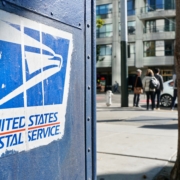Follow Up Exam
Last month, we released the article, Optimize Your Business Health: Why Now is the Perfect Time for a Small Parcel Transportation Checkup, that drew parallels between personal health, and the health of the Small Parcel marketplace. In this article we pointed out how important it is to pay close attention to your Small Parcel Transportation program and market place, the same way that you should pay close attention to your own health. Failure to do so in either case could have long lasting, dire results.
So, our question is, have you been following the news in the Small Parcel market for the past month? Are you aware of the potential epidemic that could be coming your way? If not, you could be heading for trouble a lot quicker than you think!
Call an Ambulance???
Just like your own health, the conditions of the Small Parcel Market can change very quickly. So, it is important to check the temperature of the market, and take appropriate actions based on the results. If you checked your own temperature and noticed that you were running a fever of 102 degrees, would you just ignore it?? Most likely not. You might take an aspirin and get some rest. If this didn’t help, you would probably call your Doctor.
Our blog presented a pretty solid case that demonstrated that the temperature of the Small Parcel marketplace was pretty hot. The fever for packages being driven by UPS and FedEx’s attempts to improve their financials, created the need for shippers to consider a visit with a qualified professional, or in the case of the Small Parcel Market… an expert Logistics consultant!
At this point, if you have ignored the symptoms of a potential illness, you could be facing a trip to the Emergency Room! Failure to gain control over your parcel rates now, could lead to more serious issues in the future. Once again, you are probably wondering where we are going with this!
Based on what we are hearing; we feel that there are some pretty serious things brewing that could lead to a major down turn in the health of the Small Parcel market place. We are referring to the changes being considered and proposed by the United States Postal Service (USPS).
Basically, the USPS is pushing for an increase in rates for their Parcel Select Service. This is a shipping solution typically used by high volume shippers, or consolidators to inject packages deeper into the USPS network vs. injecting them close to the shipper’s origin location. These packages are dropped off at USPS regional sorting facilities that are closer to consignees, or even at local Post Office locations (or DDU’s/ Destination Delivery Units as the USPS calls them).
On May 10th, the U.S, Postal Service filed notice with the Postal Regulatory Commission, (PRC) for Parcel Select price changes to take effect July 14, 2024. The proposed rates include an average 25-percent increase for Parcel Select service. The proposed increases for Parcel Select packages being dropped at local Post Offices/ DDU’s are as much as 43%!
It appears that the USPS is attempting to make it unattractive for consolidators to inject packages at certain facilities. There is speculation that they are pushing to improve their profit margins by forcing consolidators to inject packages further upstream, at a higher cost.
Some companies and services that utilize USPS Parcel Select service include; DHL e-commerce, OSM Worldwide, Amazon, Pitney Bowes, UPS Mail Innovations, and UPS SurePost and more.
Don’t think that your safe since you’ve been vaccinated!
Some folks that are reading this might be thinking, “I’m immune from the impact of this, since I don’t use any of these carriers or services.” Sorry but that shot that you received a while back is not going to help you. Neither will the booster! All shippers could be infected/ affected by the changes being proposed by the USPS.
If these increases go through, it could have a big impact on capacity for carriers in the Small Parcel Market. For example, UPS may choose to move more SurePost packages that are normally delivered by the USPS back into their own Small Parcel delivery network, which would decrease capacity for all UPS shippers.
What would Amazon do with the packages that they normally hand over to the USPS? They could pass this volume over to other carriers as well. The bottom line is that this could lead to decreased capacity in the Small Parcel market, and everyone knows that decreased capacity = increased rates!
For shippers using any of these consolidation services, they will surely be hit with major price increases from their carriers if this proposed pricing is approved. So, the bottom line is that this could have a ripple effect on pricing across the entire Small Parcel market place.
There is a lot of debate online regarding whether or not these increases will be approved by the PRC. There are also questions regarding how these changes might impact existing agreements that the USPS has with the big users of these services. Obviously there are many people and companies opposed to this. There is also a lot of concern that this could further damage the profits of the already struggling USPS.
So, these increases are not imminent. However, just as one should not ignore things that could impact their own health, they should not ignore things that could have a negative impact on the health of their Transportation program or company profits!
Should I go for surgery or just Another Booster?
Once again, shippers are left to consider their options and precautionary measures that they should be taking. There are many different questions that shippers should be asking themselves now. For example, should I be considering alternatives to services that utilize USPS Parcel Select now? If I’m not using these services, is my current carrier agreement going to protect me from unforeseen increases? Will my current Transportation program protect me from tightening capacity in the Parcel Market? What cost cutting measures can I take now, to offset increases that could be driven by these potential increases?
As you can see, there are a lot of complexities to consider with this scenario. The whole situation could be considered pretty scary, given the unknown outcomes. This is not any different than the uncertainty and fear that one can experience when diagnosed with a potentially serious illness. But when this happens with your health, what do you do? Most rational human beings will turn to the experts to determine the best course of action.
Do we really need to provide any more insight regarding how you should handle this? As we stressed in our last blog, we don’t charge any copay for our thorough Transportation and Logistics examination. Also, the outcomes of our engagements are always positive. So, please reach out to us today to take advantage of the free transportation health insurance that we offer to avoid out of control cost increases!







